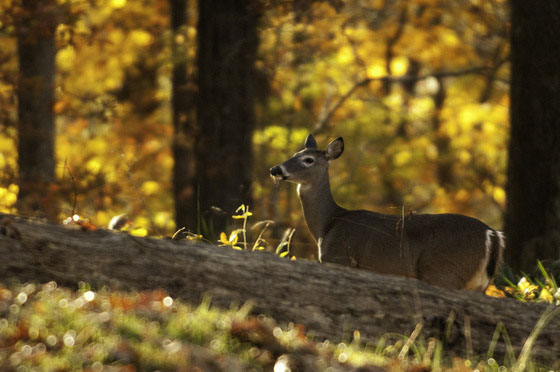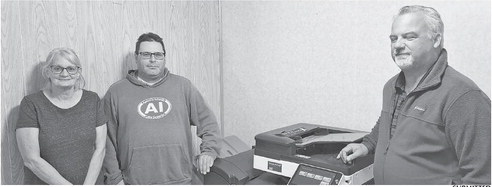Take precautions to help prevent the spread of CWD


Hunters are reminded to test their deer for chronic wasting disease (CWD) this fall. Testing is available statewide, but the DNR is particularly interested in samples from priority areas near recent CWD detection locations.
Additional samples in these areas, will help the DNR better understand disease levels and distribution.
CWD is a contagious, fatal neurological disease that affects the nervous system of deer, elk, moose and caribou. It belongs to the family of diseases known as transmissible spongiform encephalopathies or prion diseases.
Prions are misshaped proteins that can spread the disease through direct animal-to-animal contact or in the environment, through bodily substances or the carcass of infected deer. Those prions are extremely resilient and capable of remaining in the soil for years, potentially infecting several deer from a single source.
Common signs of infected deer in the later stages of the disease, are drastic weight loss, drooped head and ears, loss of coordination, excessive salivation and reduced fear of humans.
Any hunter in the state, may choose from the following testing options:
• Self-service kiosks, open 24/7. Kiosks contain supplies for hunters to drop off a deer head, with 5 inches of neck attached.
• In-person, with cooperating partners. Meat processors and other businesses can collect the deer head for sampling, or remove the lymph nodes at the time of dropoff. This is a convenient option for hunters who intend to mount their deer. If a taxidermist is not a cooperator, ask for the caped-out head back, to submit at a kiosk.
• At-home lymph node extraction. Hunters may pick up a kit ahead of time, extract the retropharyngeal lymph nodes, using the provided instructions, and return the lymph nodes to the DNR or a kiosk for testing.
• By appointment with local DNR staff. Hunters can contact their local wildlife management staff to schedule an in-person appointment.
If a hunter receives a CWD-positive test result, a replacement authorization will be issued to their Go Wild account, within two to four days. A positive result from an antlered harvest authorization will result in a replacement antlered harvest authorization for the hunter (valid statewide).
If the positive result was received for an antlerless harvest registration, an either-sex replacement harvest authorization will be issued for the same DMU and land type.
The replacement authorizations aren’t weapon-specific, and are valid for the remainder of the current hunting season and next year’s hunting seasons (starting in September 2025).
Proper disposal of deer carcasses can reduce the chance of CWD being introduced to a new area. Several disposal resources are available for hunters, including deer carcass disposal dumpsters, landfills or transfer stations.
Hunters should check for current feeding bans. There are several counties with new bans, since last year’s hunting seasons, including Ozaukee, Pierce and St. Croix.
The Wisconsin Department of Health Services (DHS), the Centers for Disease Control and Prevention, and the World Health Organization, all recommend against consuming meat from deer that test positive for CWD. Infected deer typically appear healthy for many months after contracting the disease, so the DHS encourages testing for the disease, regardless of the physical condition of the harvested deer, especially in areas prevalent with CWD.
To date, there have been no reported cases of CWD infection in humans.
For baiting bans, kiosks, dumpsters and CWD infected areas, visit dnr.wisconsin.gov.

